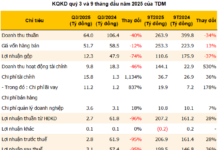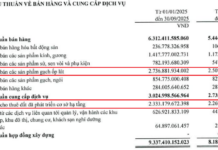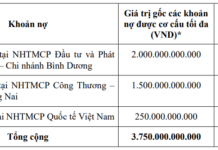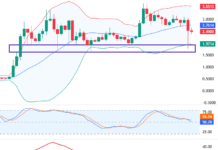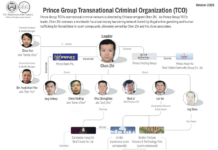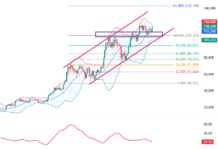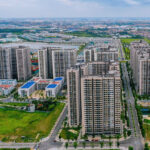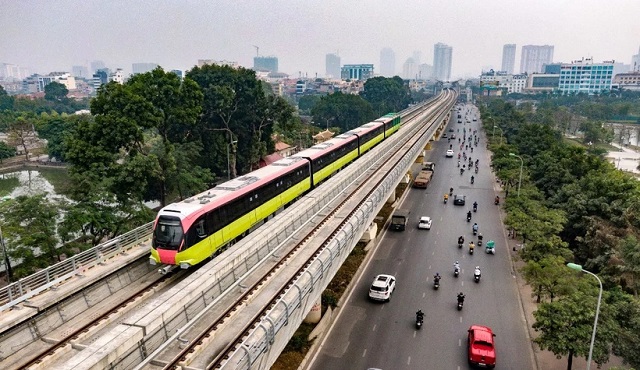
|
Hanoi needs approximately $55.4 billion to develop 15 urban railway lines. (Photo: PV/Vietnam+)
|
The city of Hanoi has planned investment capital for its urban railway system to promote public transportation and urban development, following the trends of other countries.
Backbone of Hanoi’s Transportation System
In the proposal for the investment project on the capital’s urban railway system by the Hanoi Metropolitan Railway Management Board (MRB), Mr. Nguyen Cao Minh, Director of MRB, emphasized that the urban railway is the “backbone” of the city’s transport infrastructure.
Therefore, Mr. Minh affirmed that developing the urban railway system is an objective necessity and an important driving force for the city’s socio-economic development strategy in the coming time. It is closely linked to urban development, environmental protection, industrialization, and modernization, creating a driving force for the development of the Hanoi Capital Region. The aim is to achieve a public transport usage rate of 50-55% by 2035 and over 65-70% after 2035.
According to the updated planning and adjustment of the Hanoi Capital master plan, the city will have a total of 15 urban railway lines, with 397.8km by 2035 and 196.2km by 2045.
MRB also made a preliminary calculation of the investment capital needed for the urban railway system up to 2045, which is approximately $55.44 billion. The capital demand for the period up to 2030 is estimated at $16.2 billion for 96.9km of railway lines. For the period up to 2035, the investment capital is estimated at $20.9 billion for 301km, and for the period up to 2045, the capital needed is $18.2 billion for 196.2km.
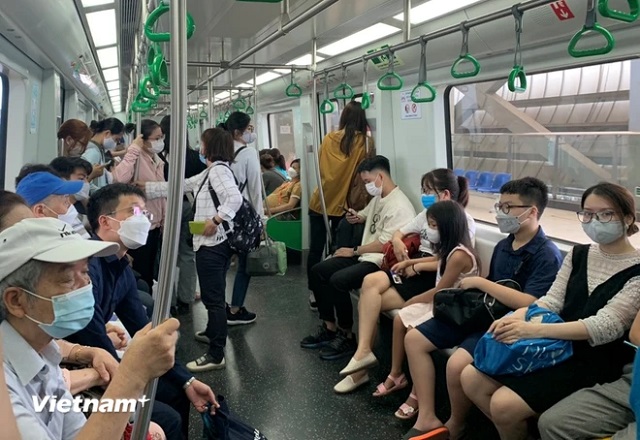
|
The Cat Linh-Ha Dong urban railway line, which is now in operation, has attracted a large number of passengers. (Photo: Viet Hung/Vietnam+)
|
Based on the review of investment capital sources, including budget capital, bond loans, ODA loans, and other mobilized capital in accordance with current regulations, MRB expects that by 2030, the city will be able to balance $11.5 billion (while the demand is $16.2 billion, with a shortfall of $4.6 billion). By 2035, the balanced capital is expected to be $16.9 billion (while the demand is $20.9 billion, with a shortfall of $3.97 billion), and by 2040, the balanced capital is projected to be $29.21 billion (while the demand is $18.26 billion).
As a result, after balancing the capital sources, Hanoi needs the Central Government to balance and allocate support capital of $8.61 billion (including $5.52 billion for the 2026-2030 medium-term period and $4.59 billion for the 2031-2035 period) by 2035. After 2035, the city will be able to proactively source capital for investment in additional urban railway lines. In the next phase, there will be a continued review and proposal for specific support plans from the Central Government for the city’s urban railway system.
“The above figures are preliminary and will be studied and adjusted during the process of completing the proposal and preparing for each project, ensuring safe and effective operation and in line with the city’s socio-economic development,” said Mr. Minh.
Need for Breakthrough Mechanisms and Policies
The capital structure is built on the principle that the lines currently under construction with ODA loans will continue to be invested with this source of capital. The remaining lines will prioritize the use of state budget capital.
Based on the planning, the distribution of existing residential areas, and the progress of investment construction, the city proposes an investment priority order, focusing on the radial lines first, followed by the ring lines. Priority will be given to lines that have been studied and prepared for investment and detailed design.
To ensure that the city’s budget plays a leading and decisive role, Hanoi prioritizes the allocation of resources in the medium-term public investment plan, the annual surplus and savings, and the efficient exploitation of land fund resources for the investment in the urban railway system. The city also utilizes the debt ceiling for each period to create budget resources with appropriate borrowing methods to invest in the development of the urban railway system.
Hanoi proposes to the Government to allow the city to collect and use 100% of the revenue from additional floor area ratio of civil construction projects, the exploitation of value increment from land in the transit-oriented development (TOD) area, and the infrastructure improvement fee to reinvest in the urban railway system, public transport system, and technical infrastructure connected to the urban railway system.
The city also proposes breakthrough mechanisms and policies to accelerate the investment preparation procedures and implementation to complete the urban railway system by 2035.
Specifically, Hanoi is authorized to adjust the function of land use in the TOD area to exploit the land fund and the value increment from the land in the TOD area. The city is also allowed to decide on the content, procedures, and special policies for site clearance, compensation, support, and resettlement independently. The implementation process can be shortened to reduce the time for appraisal and approval of the project.
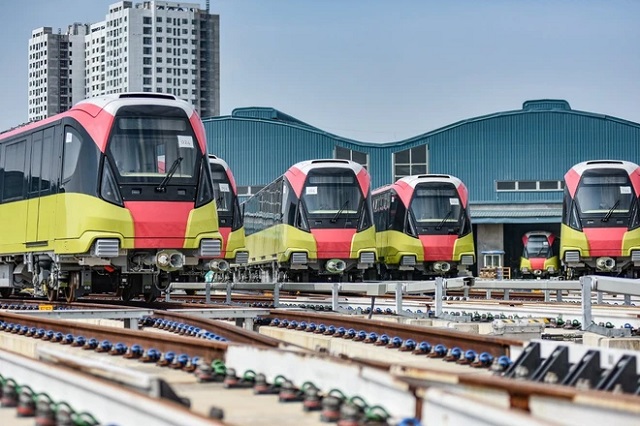
|
According to the planning, Hanoi will have 15 urban railway lines. (Photo: PV/Vietnam+)
|
The city proposes that the master plan of the capital or the specialized infrastructure planning approved by the competent authority be used as a basis for deciding on the investment policy and investment in the capital’s urban railway lines.
Regarding investment capital payment, based on the actual progress of the project, Hanoi proposes to allow the payment of counterpart capital exceeding the annual capital plan of the city without having to go through the procedure of adjusting the annual capital plan. The amount of capital paid in excess of the annual capital plan will be added to the capital plan of the following year, with the total payment not exceeding the medium-term public investment capital allocated by the Government.
In case of project extension without increasing the total investment, the city proposes that the investor does not have to carry out the procedure for adjusting the investment policy and the project.
|
It is expected that on May 15, the 16th meeting of the 16th term of the Hanoi People’s Council will approve the proposal for the investment project on the capital’s urban railway system. |
Viet Hung











